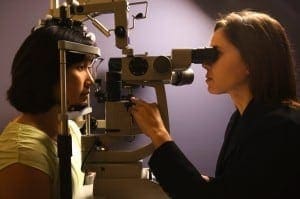Considering how dependent we are on our vision, it is surprising how little we know about keeping our eyes safe and healthy. But when it comes to health, ignorance isn’t bliss.
Test yourself and find out if you can tell fact from fiction.
Eating carrots can improve your eyes TRUE OR FALSE
Fact: Carrots are high in vitamin A, a nutrient essential for good vision. However, going on the bunny diet alone will not protect your eyes from genetic eye problems or damages from UV rays and other environmental threats. Carrots do offer a small amount of vitamin A needed for good vision. To learn more about boosting your eyesight through good nutrition, read our blog on “visionary diets.”
Wearing glasses makes your eyes dependent on them TRUE OR FALSE
Fiction: People tend to wear their glasses more once they have a good prescription because they can finally see clearly, relieving stress and tension from squinting and straining the eyes. Eye glasses support your eyes. They do not change your eyes so that they become dependent on your eyeglasses.
Sitting close to the TV will hurt your eyes TRUE OR FALSE
Fiction: While it is certainly not recommended, sitting close to the TV is more likely to give you a monster headache than damage your vision. Instead, bad eyesight may be the reason why somebody sits too close to the TV.
Babies are born blind TRUE OR FALSE
Fiction: A newborn’s vision isn’t great, but she can make out light, shapes and movement. Newborns can see only about 8 to 15 inches in the distance – enough to clearly see the face of the person holding her.
Only boys are color blind TRUE OR FALSE
Fiction: While boys are much more likely to suffer from color blindness, girls can also have it. The most common cause of color blindness is a fault in the development of retinal cones that perceive color in light and transmit that information to the optic nerve. This type of color blindness is usually a sex-linked condition, as the genes that produce photopigments are carried on the X chromosome. If these genes are affected, color blindness will manifest in boys with a higher probability than in girls because males only have one X chromosome. Color blindness can also be caused by damage to the eye, the optic nerve, or parts of the brain.
LASIK cannot correct astigmatism or farsightedness TRUE OR FALSE
Fiction: It is commonly thought that LASIK is only used to treat nearsightedness – which is wrong. LASIK can also treat farsightedness and astigmatism.
If you have good eyes you should thank your parents TRUE OR FALSE
Fact: Many vision problems are genetic. Some researchers believe that the most common vision problems among children and adults are genetically determined, including being cross-eyed, having a lazy eye or refraction errors such as nearsightedness, farsightedness and astigmatism. Genetics also are a factor in many eye diseases.




